11 types of floss for optimal oral health
Explore 11 types of dental floss options for better oral health. From waxed to water flosser, find your perfect floss!
The best floss: Traditional flossing methods
Maintaining great oral health is essential to achieving overall health. One of the best ways to care for your smile is to create a daily flossing routine. Flossing is essential to keep your teeth and gums healthy, while keeping gum disease and tooth decay at bay.
Traditional flossing still stands as the ideal method of cleaning between your teeth. Let’s explore these different types of traditional floss so you can keep up on your oral hygiene.
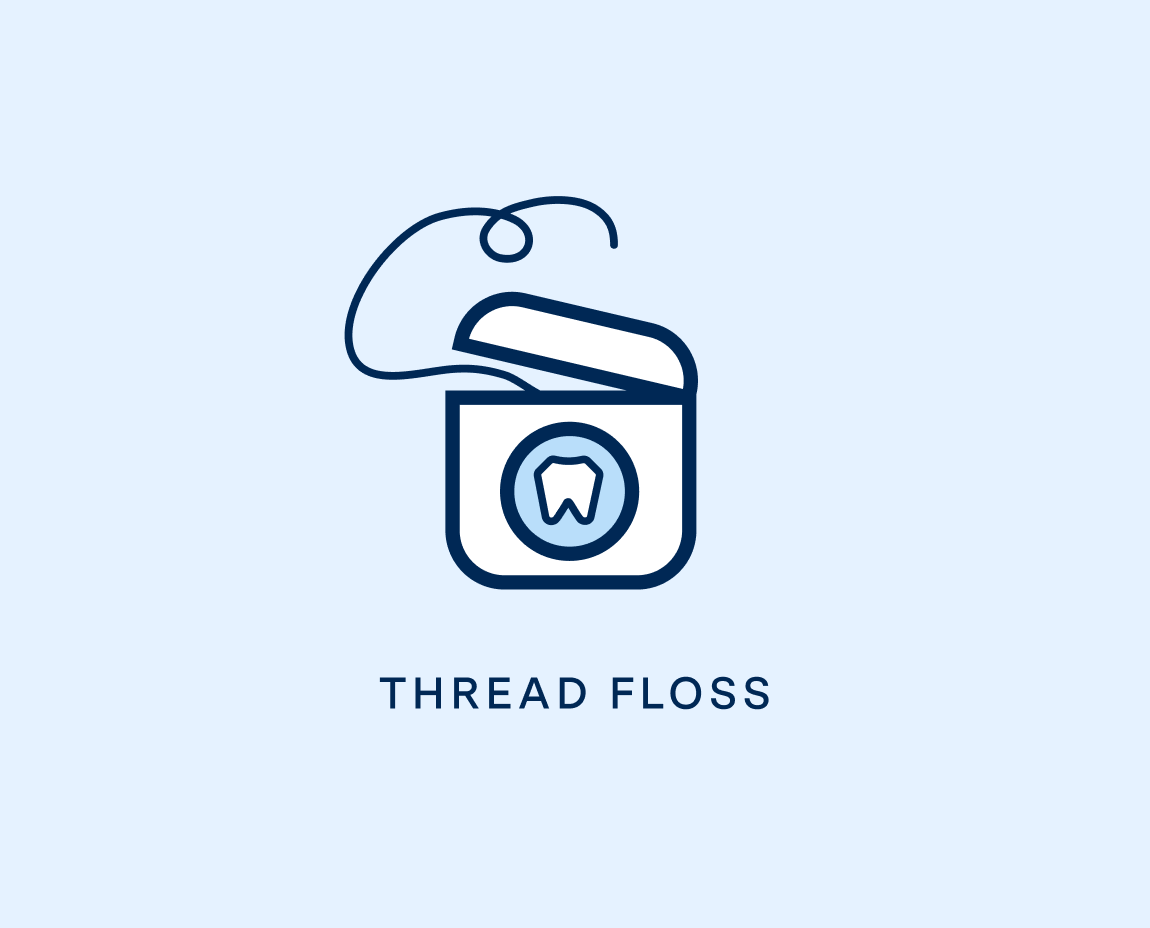
1. Thread floss
Thread flossing is the gold standard of flossing, including the use of a thin piece of dental floss to clean in between your teeth and along the gumline. This approach helps you to target those hard-to-reach areas where plaque can tend to hide. It’s also the best option if you’ve received major dental work.
Pros to using thread floss
The best at removing plaque
Traditional flossing effectively removes plaque, bacteria, and food particles from between your teeth and along the gum line.
Minimizes risk of cavities
By regularly removing plaque build-up with thread floss, you’re also helping to minimize your chances of cavities and tooth decay. Alternative methods may not be as effective in reaching these tight spaces.
Reduces inflammation
Because traditional flossing is effective at removing bacteria and debris, it helps to fight off gum inflammation and infection.
Cons to using thread floss
Can be difficult to use
If you have braces or crowded teeth, it may be challenging to thread floss through tight spaces or around the wires and brackets. This can make flossing a bit more time-consuming and could potentially cause the thread to shred.
Requires dexterity
If you find it difficult to grip thread floss or have limited dexterity, thread flossing may pose a challenge.
Use extra care around dental work
If you have recently had dental work done, like getting dental implants or dental bridges, take extra care when using thread floss. The thread can more easily get caught on the dental work, and you want to avoid causing any damage or dislodgement.

2. Waxed floss
Another option to add to your flossing repertoire is waxed and unwaxed floss. Both are great options to clean interdentally and provide varying levels of comfort. Waxed floss has a thin layer of wax coating on the surface of the floss and tends to be a bit thicker than unwaxed floss.
Pros to using waxed floss
Ease of use
Waxed floss is designed with a smooth coating for effortless navigation between tight spaces.
Durability
Enhanced durability minimizes the change of shredding.
Variety of flavors
Upgrade your flossing experience with flavored wax floss, enjoying flavors like mint, cinnamon or bubblegum.
Cons to using waxed floss
Difficulty in reaching tight spaces
One of the downsides of waxed floss is that its wax coating makes it more difficult to navigate around tight spaces.
Increased risk of wax residue
The smooth coating of waxed floss can leave behind a residue on teeth and gums that can be difficult to remove.
Potential for discomfort or irritation
Depending on the sensitivity of your teeth and gums, the waxed coating on the floss can potentially cause mild discomfort or irritation.
3. Unwaxed floss
Alternatively, unwaxed floss is slimmer and provides a notably tactile feel. Without the wax coating, it adapts well if you have wider spaces between your teeth.
Pros to using unwaxed floss
Enhanced precision in cleaning
Unwaxed floss, due to its thinner and natural feel, enables you to maneuver it more precisely. This is especially helpful if you’ve had dental work done.
Reduced risk of residue
Unlike waxed floss, unwaxed floss doesn’t leave behind any waxy residue on teeth or gums.
Suitable for sensitive gums
If you have sensitive gums, you may find unwaxed floss more comfortable to use.
Cons to using unwaxed floss
Limitation in tight space cleaning
If you’re considering unwaxed floss, you may possibly find it challenging to reach tight spaces in between teeth.
Potential for fraying or breakage
The lack of wax coating on unwaxed floss makes it more prone to fraying or breaking during use.
Limited flavor or scent options
Unlike waxed floss that often comes in a variety of flavored options, unwaxed floss typically lacks these additional sensory experiences.
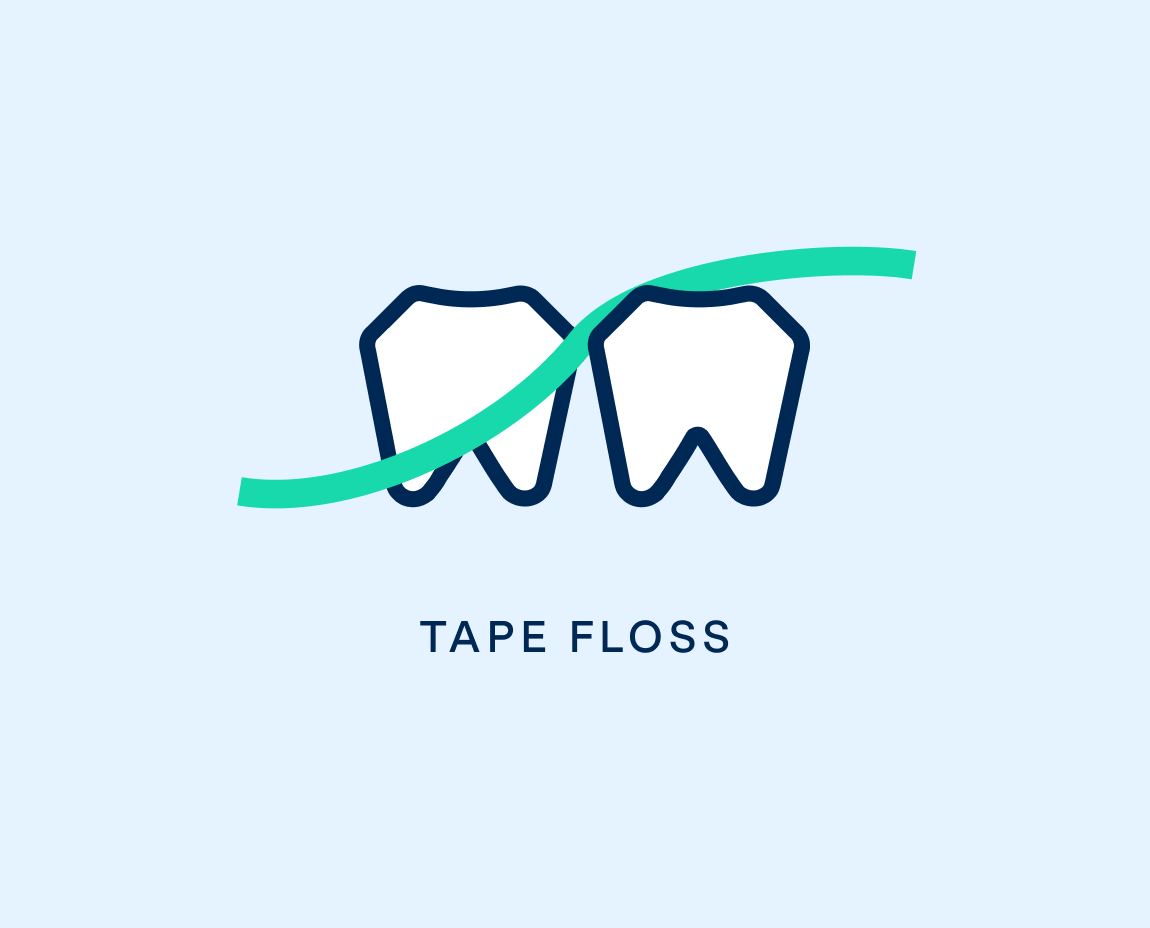
4. Tape floss
Tape floss, also known as wide floss or dental tape, has a flat and wider shape. This provides you with a broader surface area for cleaning between your teeth and along your gumline. Tape floss is another good option if you have wider tooth spacing or have had dental work done like bridges or implants.
Pros to using tape floss
Enhanced cleaning coverage
The wider surface area of tape floss provides you with improved coverage, making it easier for you to remove plaque and debris from larger gaps between your teeth.
Gentle on your gums
Due to its flat and smooth texture, tape floss is usually gentler on your gums compared to traditional floss. This reduces the risk of causing irritation or discomfort.
Ease of use
The wider design of tape floss allows for better grip and control, making it easier for you to maneuver between your teeth. This can be especially helpful if you struggle with dexterity.
Cons to using tape floss
Limited access to tight spaces
You may have difficulty reaching and cleaning tight spaces between your teeth.
Bulkiness for some users
The wider nature of tape floss may feel bulky or uncomfortable if you have closely spaced teeth.
Limited flavor options
Compared to traditional flossing methods, tape floss may have fewer options when it comes to flavors or scents.
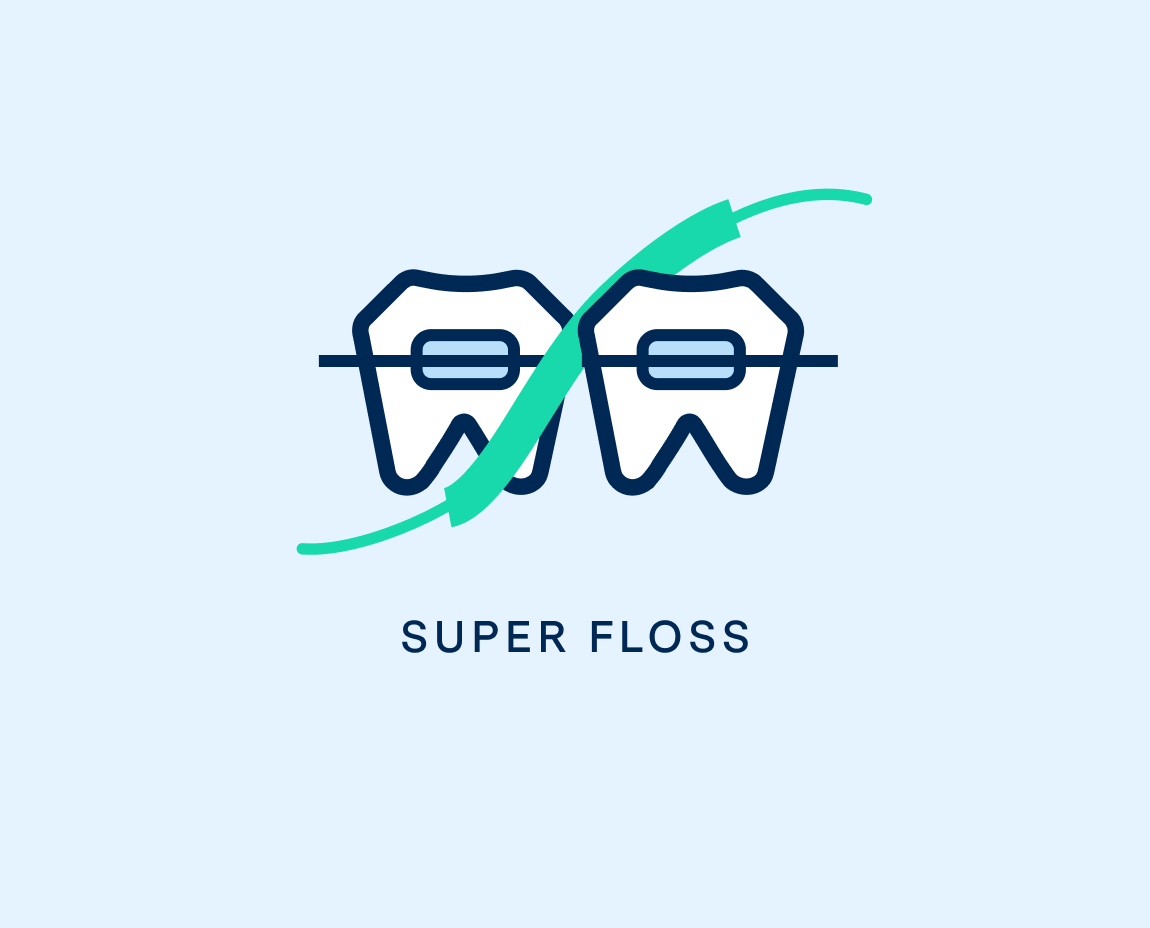
5. Super floss
Super floss is a specialized dental floss designed to cater to specific oral care needs, such as cleaning braces, bridges and wider gaps between teeth. It includes a stiffened-end dental floss threader, making it more convenient to grip and maneuver between teeth.
Pros of using super floss
Effective cleaning for braces and orthodontic appliances
Super floss is specifically designed to navigate around braces and orthodontic appliances, ensuring thorough cleaning in hard-to-reach areas.
Ideal for bridges and wide gaps between teeth
With its additional width and strength, super floss offers great cleaning coverage for bridges and wide gaps between teeth.
Versatile and convenient
Super floss comes in pre-cut strands, offering convenience and ease of use. The ready-to-use strands eliminate the need for measuring and cutting, ensuring you have hassle-free experience.
Cons of using super floss
Potential difficulty for individuals with closely spaced teeth
Due to its wider design, super floss may feel bulky or challenging to insert between closely spaced teeth.
Limited flavor options
While many traditional floss brands offer a variety of flavors, super floss may have fewer options in terms of taste or scent.
Learning curve for beginners
Because of its stiffened-end dental floss threader, it may require some practice to get used to.
The best floss: Alternative methods
Although the most effective option is traditional flossing, there are plenty of other alternative methods to complement your flossing strategy. The best flossing routine is the one you do every day so let’s look at the alternate types of flosses out there.
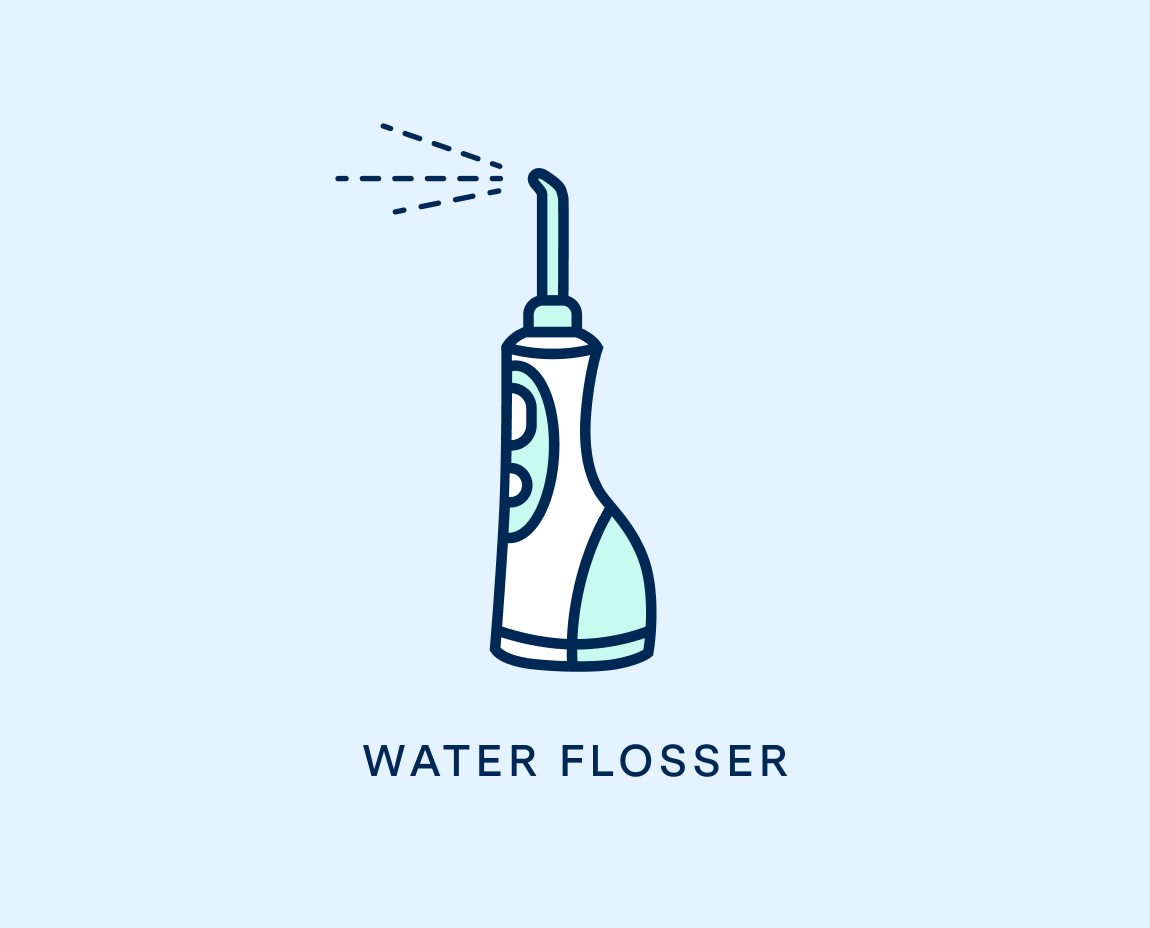
6. Water flossers
Super floss is a specialized dental floss designed to cater to specific oral care needs, such as cleaning braces, bridges and wider gaps between teeth. It includes a stiffened-end dental floss threader, making it more convenient to grip and maneuver between teeth.
Pros of using super floss
Effective cleaning for braces and orthodontic appliances
Super floss is specifically designed to navigate around braces and orthodontic appliances, like permanent retainers, ensuring thorough cleaning in hard-to-reach areas.
Ideal for bridges and wide gaps between teeth
With its additional width and strength, super floss offers great cleaning coverage for bridges and wide gaps between teeth.
Versatile and convenient
Super floss comes in pre-cut strands, offering convenience and ease of use. The ready-to-use strands eliminate the need for measuring and cutting, ensuring you have hassle-free experience.
Cons of using super floss
Potential difficulty for individuals with closely spaced teeth
Due to its wider design, super floss may feel bulky or challenging to insert between closely spaced teeth.
Limited flavor options
While many traditional floss brands offer a variety of flavors, super floss may have fewer options in terms of taste or scent.
Price
Super floss tends to be a bit more expensive when compared to traditional floss.
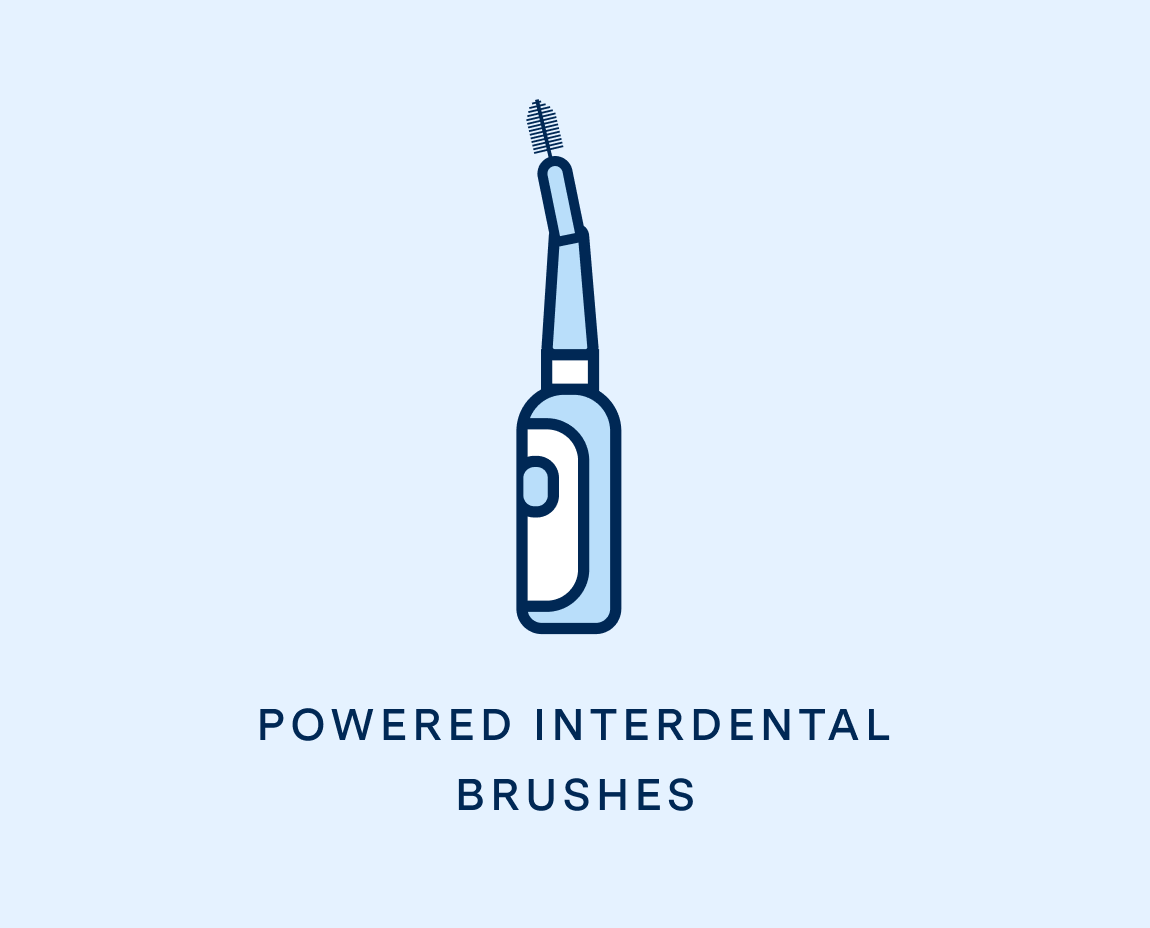
7. Powered interdental brushes
Interdental brushes are high-tech cleaners that work like powered toothbrushes. Some models use string floss, while others employ a gentle yet powerful stream of water to remove food bits and plaque from between your teeth and below the gum line. Many of these cleaners even come equipped with timers and adjustable intensity levels, all activated with the push of a button.
Interdental brushes are especially useful if you tend to struggle with grip issues, wear braces or have undergone treatments such as implant-supported dentures or bridges. They resemble tiny bottle brushes and are best for cleaning larger interdental spaces.
These brushes provide another great option to remove plaque from between your teeth and around orthodontic appliances. Their varied sizes cater to different gap sizes between teeth, providing a more customized cleaning experience.
Pros to using interdental brushes
Deep clean
The small brush can thoroughly clean teeth gaps, making it more effective than brushing alone. They also help to prevent interproximal bleeding.
Simplicity
Interdental brushes are simple to use and don’t take a lot of preparation to learn how they function.
Prevents injuries to the gums
Gentler than traditional flossing, interdental brushes help preserve the integrity of your gums.
Cons to using interdental brushes
Short lifespan
Interdental brushes don’t last as long as traditional floss.
Require more effort to purchase
This type of floss is a bit harder to find than conventional floss.
Can cause occasional bleeding
If you apply too much pressure as you learn to use the tool, it can cause gums to bleed.

8. Dental picks
Dental picks, also known as interdental brushes, are designed to sweep away plaque and food particles that your regular toothbrush might miss. Dental picks are available in wood or plastic, but it's important to note that these picks are different from regular toothpicks.
Pros to using dental picks
Remove buildup
Dental picks effectively remove plaque and food particles from hard-to-reach areas between teeth.
Promote gum health
They stimulate blood flow and help to improve overall oral hygiene.
Can clean around orthodontic work
Dental picks are particularly beneficial if you have braces, as they help maintain cleanliness around brackets and wires.
Cons to using dental picks
Can cause gum irritation
Picks may cause swelling or bleeding if not used properly or with too much force.
Not the best for sensitive gums
If you have sensitive gums or gum disease, this option may not be gentle enough to support the health of your gums.
Require proper care
To avoid damaging tooth enamel or causing discomfort while using them, it’s important to use proper technique when maneuvering dental picks around your teeth
9. Floss picks and pre-threaded flossers
Floss picks are nice because they combine the functionality of traditional floss with convenience of a handle, making them easy to grip and maneuver. This is especially useful to help you reach the back of your teeth. Their ease and portability make them a great choice for on-the-go oral care.
Pros to using floss picks
Convenience
Floss picks are convenient and easy to use, especially in comparison to traditional dental floss. The handle on the pick makes it simpler to reach back teeth and navigate between tight spaces.
Portability
Because floss picks are compact and portable, it makes them ideal for on-the-go oral care. They can be easily carried in pockets or bags, promoting healthy flossing habits.
Less mess
Unlike traditional floss, floss picks are less messy as they have a controlled length of floss attached. This can make your flossing process neater and more user-friendly.
Cons to using floss picks
Can cause damage to gums
The design of the floss picks causes you to maneuver them in a way that can be harmful to your gums. Things to watch out for are bleeding, receding gums and lesions.
Distributing bacteria
Because the pick uses the same section of floss repeatedly, it can push bacteria between your teeth.
Limited reach
The fixed length of floss on a pick may limit its reach, especially for patients with larger hands or when trying to access teeth in the back of the mouth. Traditional floss allows for more customizable lengths.

10. Wooden plaque removers, or toothpicks
Floss picks are nice because they combine the functionality of traditional floss with convenience of a handle, making them easy to grip and maneuver. This is especially useful to help you reach the back of your teeth. Their ease and portability make them a great choice for on-the-go oral care.
Pros to using floss picks
Convenience
Floss picks are convenient and easy to use, especially in comparison to traditional dental floss. The handle on the pick makes it simpler to reach back teeth and navigate between tight spaces.
Portability
Because floss picks are compact and portable, it makes them ideal for on-the-go oral care. They can be easily carried in pockets or bags, promoting healthy flossing habits.
Less mess
Unlike traditional floss, floss picks are less messy as they have a controlled length of floss attached. This can make your flossing process neater and more user-friendly.
Cons to using floss picks
Can cause damage to gums
The design of the floss picks causes you to maneuver them in a way that can be harmful to your gums. Things to watch out for are bleeding, receding gums and lesions.
Distributing bacteria
Because the pick uses the same section of floss repeatedly, it can push bacteria between your teeth.
Limited reach
The fixed length of floss on a pick may limit its reach, especially for patients with larger hands or when trying to access teeth in the back of the mouth. Traditional floss allows for more customizable lengths.

11. Air flossers
Floss picks are nice because they combine the functionality of traditional floss with convenience of a handle, making them easy to grip and maneuver. This is especially useful to help you reach the back of your teeth. Their ease and portability make them a great choice for on-the-go oral care.
Pros to using floss picks
Convenience
Floss picks are convenient and easy to use, especially in comparison to traditional dental floss. The handle on the pick makes it simpler to reach back teeth and navigate between tight spaces.
Portability
Because floss picks are compact and portable, it makes them ideal for on-the-go oral care. They can be easily carried in pockets or bags, promoting healthy flossing habits.
Less mess
Unlike traditional floss, floss picks are less messy as they have a controlled length of floss attached. This can make your flossing process neater and more user-friendly.
Cons to using floss picks
Can cause damage to gums
The design of the floss picks causes you to maneuver them in a way that can be harmful to your gums. Things to watch out for are bleeding, receding gums and lesions.
Distributing bacteria
Because the pick uses the same section of floss repeatedly, it can push bacteria between your teeth.
Limited reach
The fixed length of floss on a pick may limit its reach, especially for patients with larger hands or when trying to access teeth in the back of the mouth. Traditional floss allows for more customizable lengths.
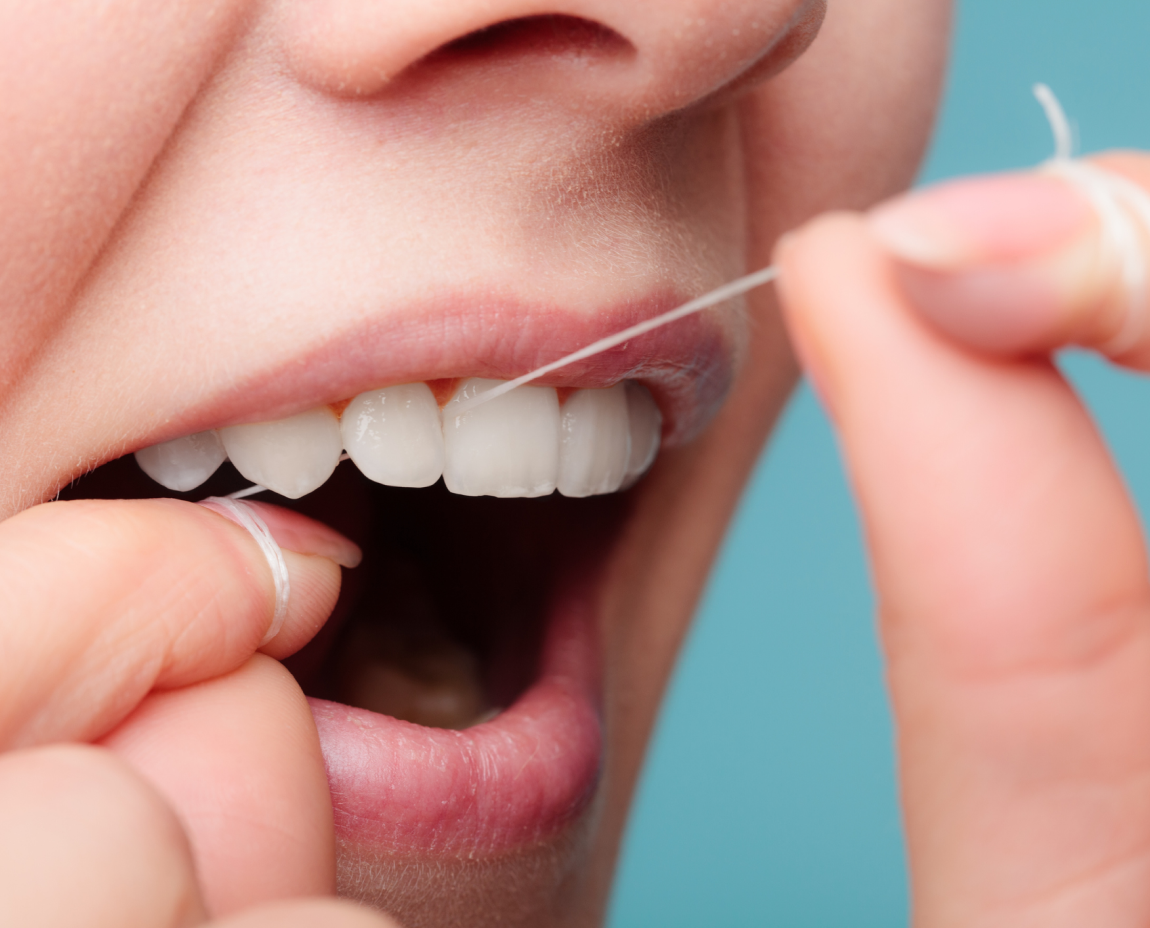
Floss your way to better oral health
There are many options and types of flosses, all of which are useful and have different strengths. Although traditional dental floss is the golden standard for flossing, these options can complement your daily hygiene routine.
The best floss is the one that you enjoy and will do consistently, so explore your options until you find a favorite. Flossing, brushing and keeping up with your dental check-ups are all essential to protecting your smile.
For a personalized approach, you can speak with your local Aspen Dental dentist about your oral health to see what type of floss they recommend for your unique smile.

